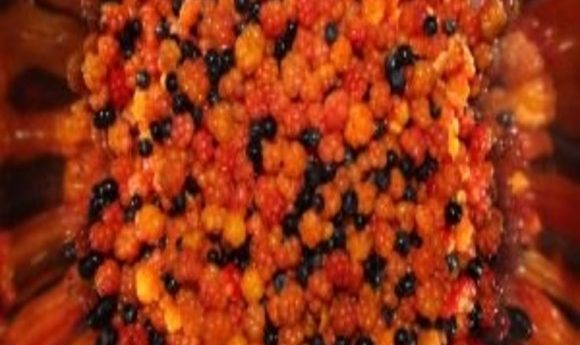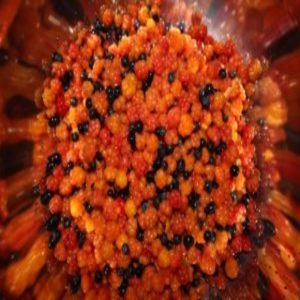Are lab-grown foods the answer?

Following the announcement that lab-grown meat may be on sale by the end of 2018, scientists are now pushing forward with this innovation, developing methods to produce lab-grown foods with a high nutritional content in the form of plant-based superfoods.

A selection of cloudberries and blueberries
Lab-grown meat has been at the center of much discussion over recent years and now, claims by producers that these products could be on sale by the end of this year have made the topic even more prominent. The lab-grown meat is made from cultured tissue, which is grown from a few cells taken from biopsies of living animals (1).
Growth and demand
It is believed lab-grown food could be the key to reducing global warming and lowering greenhouse emissions by a predicted 96%, as well as preventing the clearing of rainforests and green space in order to grow feed for farm animals.
The planet’s rapid population growth has triggered an inflated demand for food production. The call for new methods to meet this demand is ever more pressing as the food industry struggles to keep up and global warming is at an all-time high.
“This is not only a completely new opportunity for the food industry but to society as a whole. There is not enough arable land to meet the growing global population’s food demands; new solutions are desperately needed. Cell cultures have serious potential for meeting this need,” explained Emilia Nordlund, the leader of VTT’s Food Solutions Team.
Whilst this may already sound almost too good to be true, scientists have also suggested the lab-grown meat has the potential to be healthier than the real thing as they have more opportunity to control its nutritional content.
To health
Researchers at the VTT Technical Research Centre of Finland (Espoo, Finland) are now also working on developing a brand new method of producing plant-based superfoods through plant cell culture (PCC) technology, rather than field cultivation.
In their most recent study, published in Food Research International, VTT grew a selection of superfoods using PCC. Cloudberry, lingonberry and stoneberry samples were assessed on their nutritional and sensory profiles to determine if lab-grown superfoods can be better than the real thing (2).
The samples grown using the novel PCC technology were determined to have a pleasant, fresh and mild flavor, which resembled the fresh fruits. Visually, they were also similar to the real thing.
The samples grown from cells had a high nutritional content, which were also assessed to be higher than in the real fruits in many respects. The protein content of the samples was high, at between 14–19%, with in vitro analysis showing good protein digestibility. They also had very high essential amino acid content, which was even higher than the amino acid content of soy. Their dietary fiber content was between 21–37%, which is higher than in breakfast cereals. The energy content of the samples was also higher than had been expected. The samples were also found to be rich sources of unsaturated fatty acids.
A previous VTT study had shown that cell cultures have a high polyphenol content (3), which is already a staple of established and well-known superfoods, such as dark chocolate, flaxseed and olives (4).
To the future
The lab grown superfoods offer great scope for new product innovation. It is hoped they will be utilized to produce new health products, such as smoothies and bars, which are densely packed with a high nutritional content.
“Biomass produced with plant cell culture technology should be considered as completely new food material, which is why their characteristics should not necessarily be compared with corresponding fresh fruits. Their excellent nutritional properties are a sign of great future potential of plant cell cultures in creating new types of superfoods. The variations produced by using different plants offer limitless possibilities,” commented Heiko Rischer, the leader of VTT’s Plant Biotechnology Research Team.
Before we can get too excited by the prospect and great promises of lab grown foods, they are still yet to be approved by regulatory bodies before they can make their way onto the market. And, before that happens, further research must be undertaken to fully comprehend their properties and weed out any potential health risks.
The VTT researchers are working to develop the method and concepts further and are currently seeking collaboration with those interested in the development of new plant materials and the production processes.